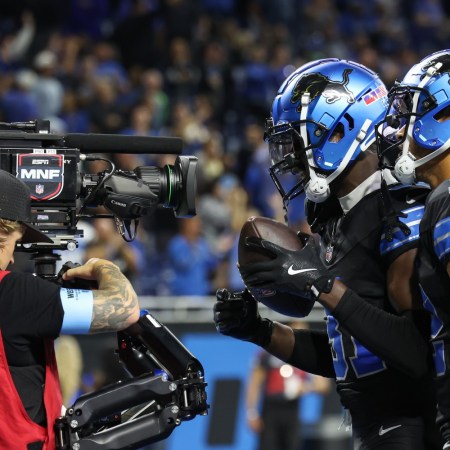In a paper that was written and released in tandem with the National Football League, the Centers for Disease Control detailed how the NFL was able to play the 2020 season as the COVID-19 pandemic surged throughout the United States — and what the league learned.
Though the NFL had to shift numerous games throughout the season and implement stricter health and safety protocols as time went on, the league was able to complete its regular season and the playoffs on time with only the Super Bowl — which will take place on February 7 in Tampa Bay — still remaining left to play on the schedule.
In order for that to happen, the league conducted about 623,000 COVID-19 tests on approximately 11,400 players and team staff members from August 9 to November 21. Of all the personnel who were tested, only 329 tested people positive (2.9 percent). After November 21, the league began a more intensive protocol that included high-risk interaction tracing and daily testing, according to The Associated Press.
An analysis of the before-and-after data gleaned from the intensive protocol revealed that the stoppage of in-person meetings, even if people were able to be six feet apart in a room, was essential in stopping the spread of COVID-19.
“It’s important to recognize that the most impactful intervention was not testing or tracking devices,” said Dr. Allen Sills, the NFL’s chief medical officer. “The most impactful interventions were universal use of facemasks, holding meetings outside and minimizing in-person meetings, closing dining rooms — those all have broad applicability outside of football.”
In addition to maintaining distance, the data obtained by the NFL also shows the quality of the masks being used as well as the quality of the airflow and ventilation were key factors in limiting the spread of the coronavirus.
“In the NFL, COVID-19 transmission was identified in persons with [less than] 15 minutes of consecutive or cumulative interaction and was reduced through implementation of an intensive protocol focused on environmental change, increased personal protection, avoidance of high-risk interactions such as vehicle sharing, eating in the same room or common areas, and expansion of the components of contact tracing to incorporate high-risk contact designations,” according to the paper. “Although the protocols implemented by the NFL were resource-intensive, strategies such as accounting for the specific characteristics of the close contact, in addition to time and duration, and creation of an intensive protocol are applicable to other settings, including essential workplaces, long-term care facilities, and schools.”
The Charge will help you move better, think clearer and stay in the game longer. Subscribe to our wellness newsletter today.



















